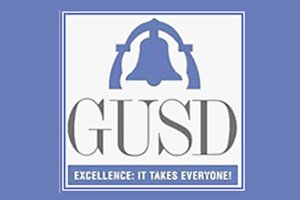As the fiscal climate for California’s education system takes an
unprecedented shift toward the perfect storm, budget dialogue at
the local level is soaked with a sense of urgency and frustration.
Full article
Today’s breaking news:
Police respond to shooting at King’s Rest Motel
Guerrero’s sights set on interim lightweight titles
Council approves station plan consultant
Gracie in Wonderland
As the fiscal climate for California’s education system takes an unprecedented shift toward the perfect storm, budget dialogue at the local level is soaked with a sense of urgency and frustration.
“Schools are like beggars standing on the street corner with their hands out, and we get whatever the state gives us,” said Mark Good, Gilroy Unified School District trustee, during Thursday’s school board meeting at 7810 Arroyo Circle. “We need to start looking at what else we’re going to cut, and we need to start looking now.”
After months of whittling down their budget, administrators are now faced with a possible third phase of cuts, leading trustee Jaime Rosso to revisit highly sensitive topics.
“When they start seeing the cuts to potential beloved programs – arts, music and impossible class sizes – maybe that will wake up the community as to the level of problem we’ve got,” he said bluntly.
Going through that painful “exercise” of examining what might have to go, he said, will help educate the community to what level of impacts they could be seeing in their schools.
Initially administrators were faced with a possible $2.1 billion reduction to Proposition 98, a voter-approved measure solidified in 1998 that guarantees minimum state funding for schools. Now, this number could spike from $4 to $5 billion according to Gov. Jerry Brown.
Kirsten Perez, GUSD director of fiscal services, brought this grim reality home.
She explained at first, GUSD was looking at a $330 loss in average daily attendance, or ADA – the amount GUSD receives from the state per average daily attending student.
“You can double that number, at least,” she said. “Instead of $6.7 million dollars, there would be over $10 million to cut.”
Cost-cutting measures
For months the district has been struggling to get a plan in place, but what administrators projected to be the “worst case” continues to darken.
“There’s only so many places we can go now,” said GUSD Superintendent Debbie Flores, who pointed out the deadline to provide layoff notices for certificated staff has already come and gone. “That makes this very difficult.”
Up until now, GUSD has been faced with two possible fiscal scenarios. If temporary tax extensions made it to the ballot in a special June election – and were passed – the district would have to cut $2.8 million from its budget.
For this scenario, GUSD has found a way to meet these cuts through strategies such as reductions in the home-to-school transportation program, reorganization and downsizing at the district office, reducing staffing of secondary school administrative positions, reducing the independent study program and implementing three furlough days.
If proposed temporary tax extensions aren’t passed, GUSD will have to cut at least $6.7 million from its budget.
In order to meet these cuts, trustees have been revisiting and revising a list of proposed slashes, but were still $387,954 short in their game plan for cutting $6.7 million.
During Thursday’s school board meeting, they voted on a measure to help reach this target.
The proposal to utilize $375,000 in funds from the Special Education American Recovery and Reinvestment Act, which would decrease the shortfall to $12,954, was unanimously approved by the board around 8:30 p.m. Thursday.
Trustees also approved the motion to close the Homeschool Gilroy Program in June.
The program has been operating for two years, has 35 students enrolled and was encroaching on the district’s general fund by $29,000, according to Perez.
The situation worsens
Despite budget cutting measures approved during Thursday’s meeting, however, trustees have a new rogue wave to evade.
Gov. Brown announced March 29 negotiations to let voters decide on whether to continue temporary state tax extensions came to a screeching halt, catapulting GUSD’s “worst-case” scenario into reality.
“We’re talking about phase three cuts; something going just off the charts that will impact our schools and our students,” Rosso said. “And I just think it’s outrageous. I’m just so disappointed in our legislature. I think we’ve been doing a very credible job of improving our district, but this is going to put us into reverse.”
Perez reiterated “there is definitely no hope for a June special election at this point.”
She added there have been discussions about placing the measures on a November ballot, but this won’t do GUSD any good since their budget plan must be turned in by July 1.
A string of poignant dialogue ensued as trustees addressed the situation and explored additional routes of action.
Rosso called for a “unity of purpose within the community,” getting the business sector engaged and rallying local groups to put pressure on legislature and leaders who are “preventing this measure from getting to the voters.” To give GUSD a stronger presence in city discourse, Rosso requested trustees draft a formal request to add a Government Review Committee to the to Gilroy Chamber of Commerce. Good agreed with Rosso but pointed out bureaucratic inefficiency is the bigger problem.
He noted state leaders should have followed the law in the first place.
Even though voters passed Proposition 98, he said, the state hasn’t been obeying the law and uses “fake math” every year.
“The state says, ‘we’ll give you a dollar,'” he explained. “But they play the deficit factor and give you 60 cents instead.”
Rosso said the board needs to show leadership and “get ahead of this thing” by educating the community and parents on the situation at hand.
Bress agreed, impressing on the considerable “misunderstanding” floating around.
“We need to start educating Gilroy and community leaders. I think that will engage people,” she said.
Trustees vowed to reach out for all the support they can get.
“When I’m out there talking about this issue, I’m really amazed at how people don’t know some of the basic facts about how California education is funded. We seemed to be lumped in this whole big group of public waste,” said Bress. “I think that’s how a lot of people perceive what’s going on. It’s important that (the community knows) how we got to this point, what we’re doing about it and how it’s going to impact our district.”













